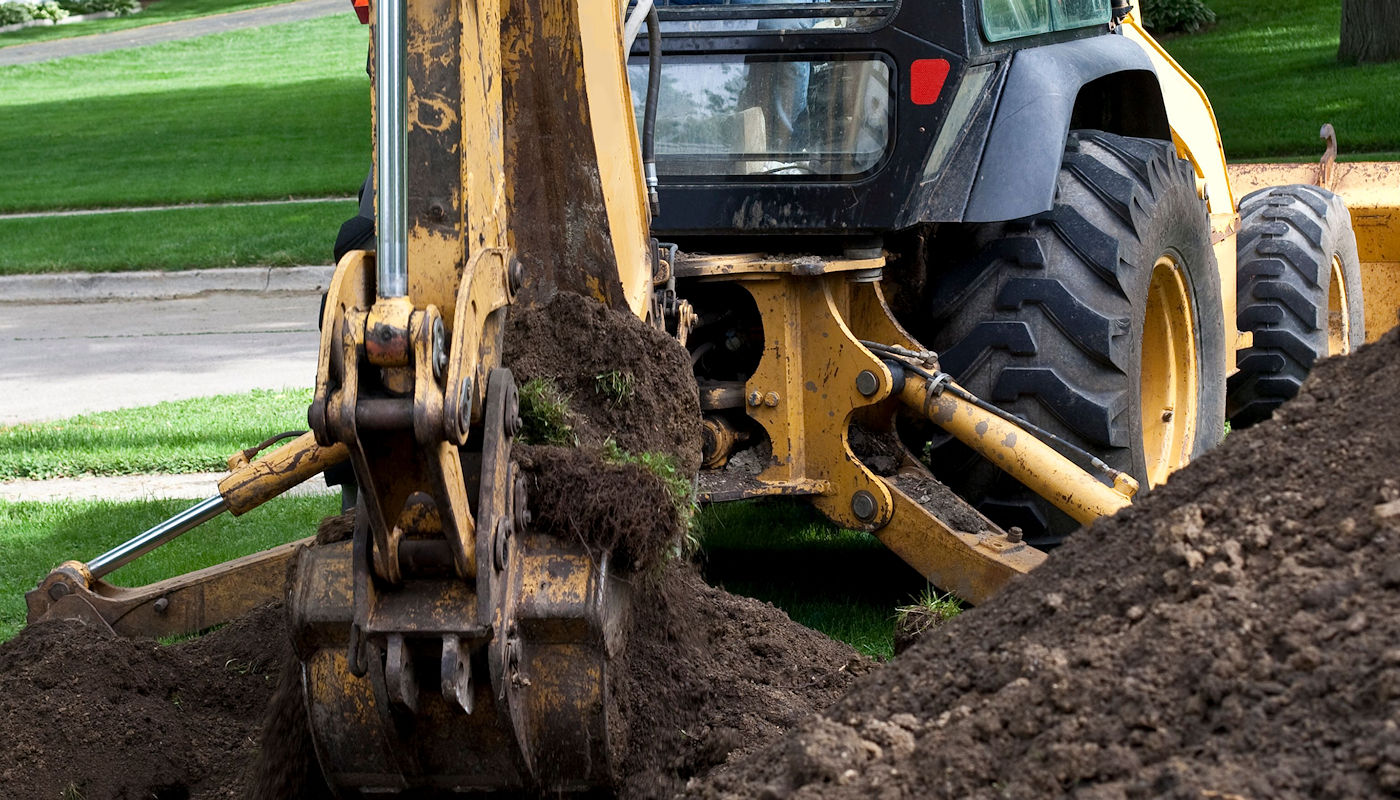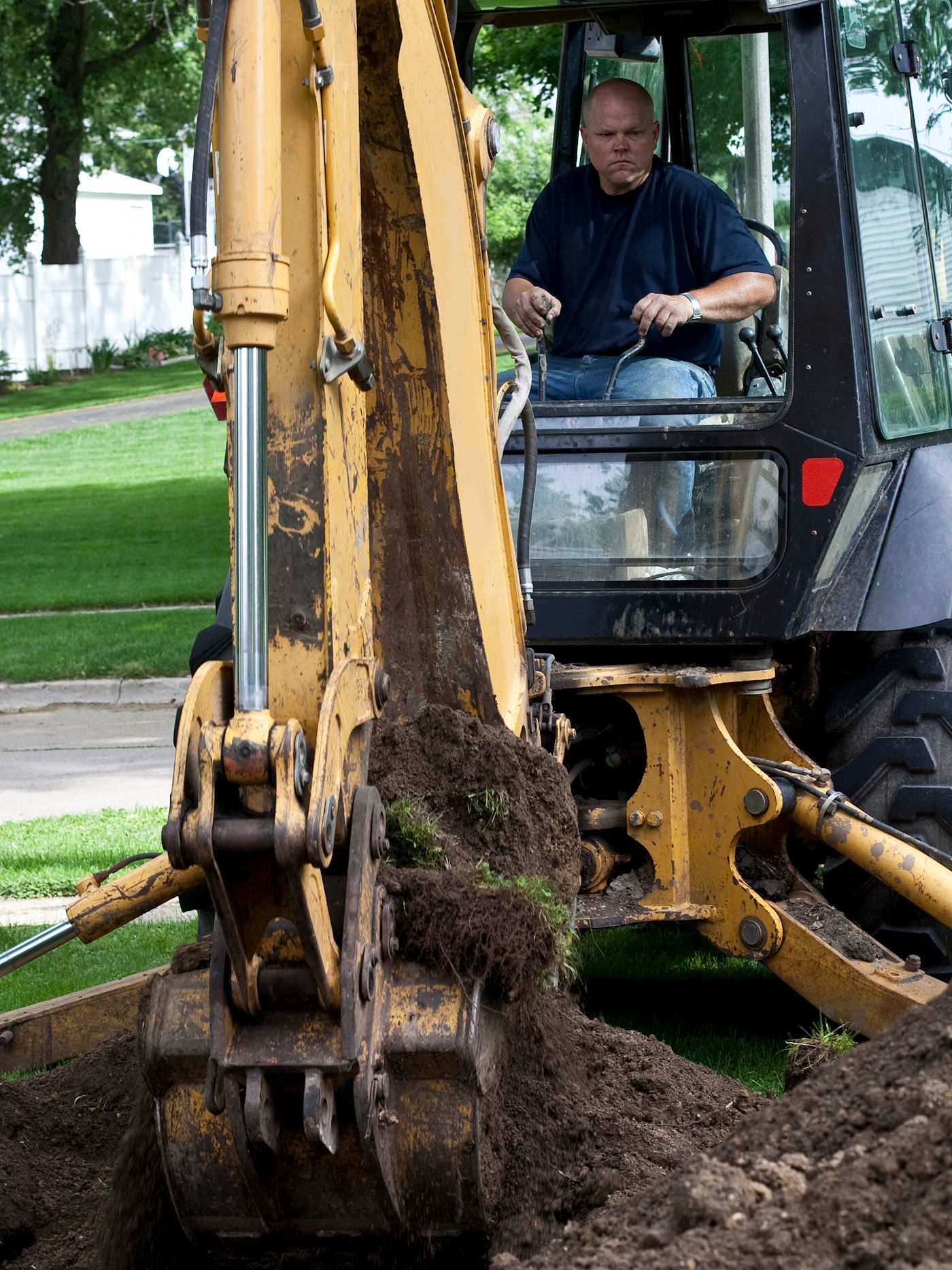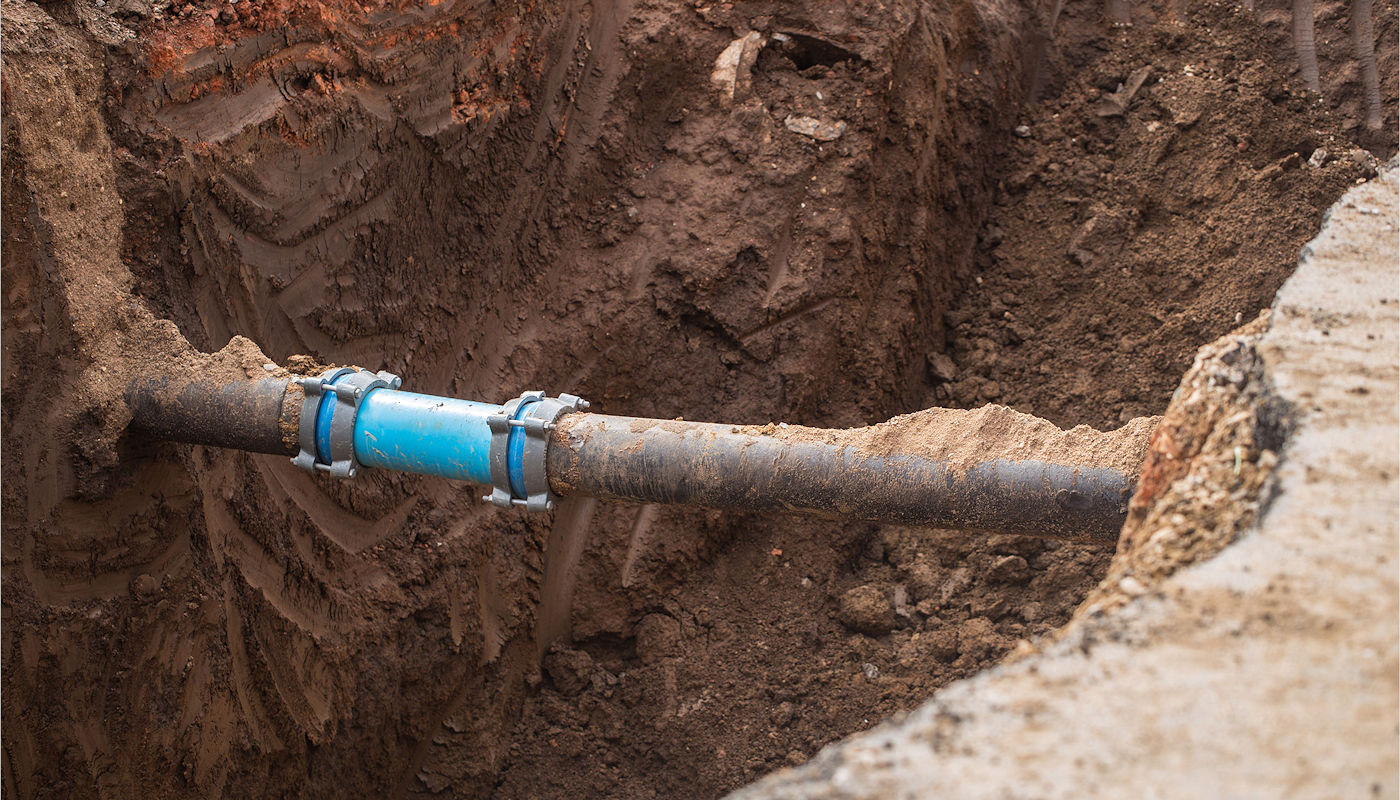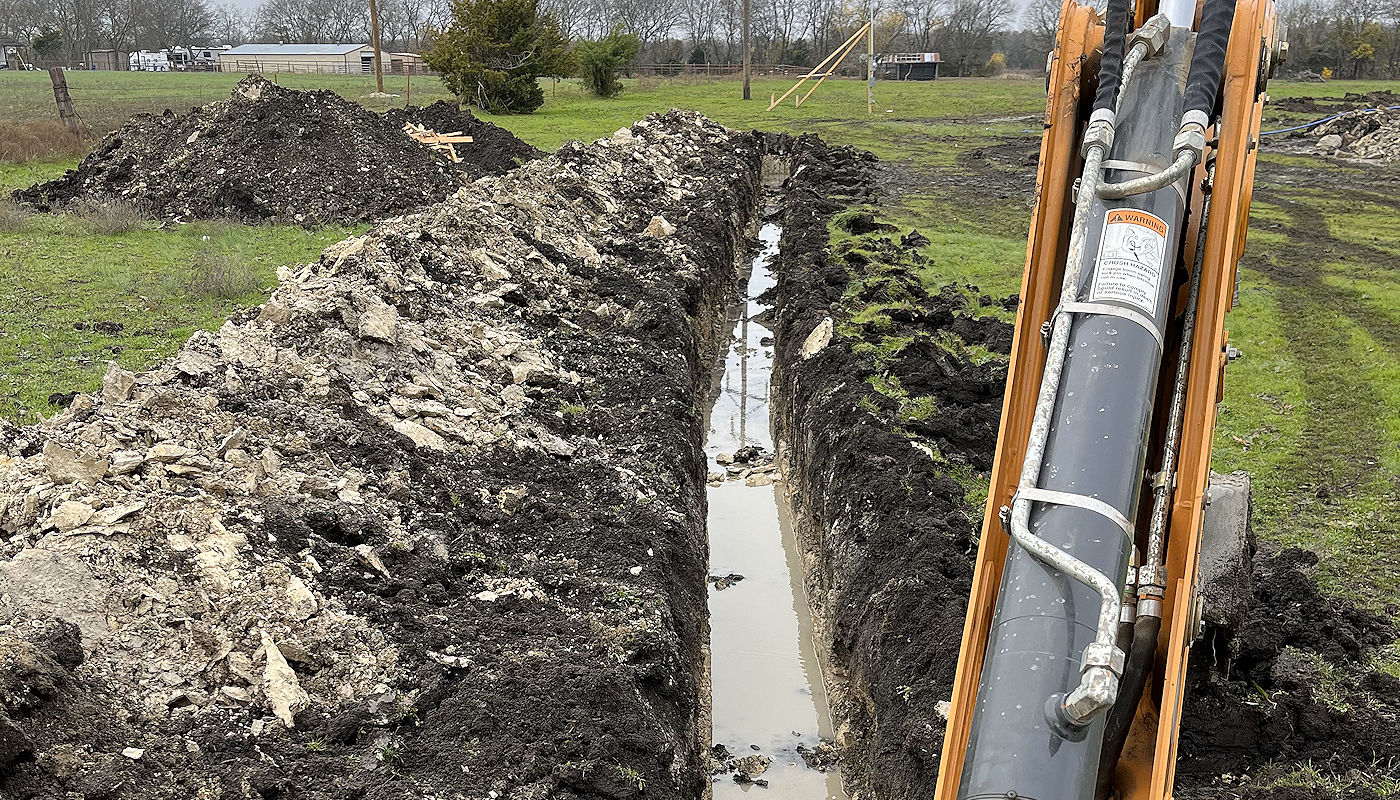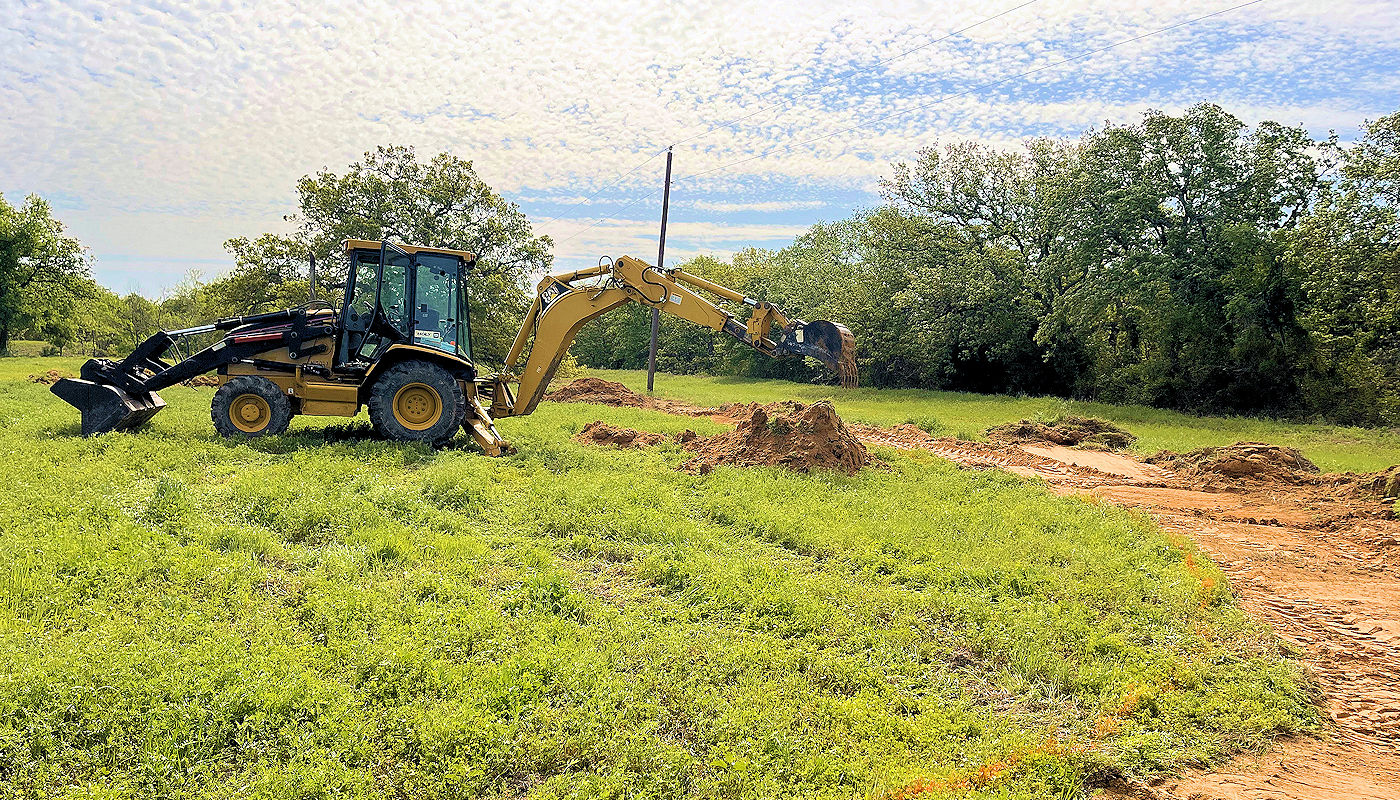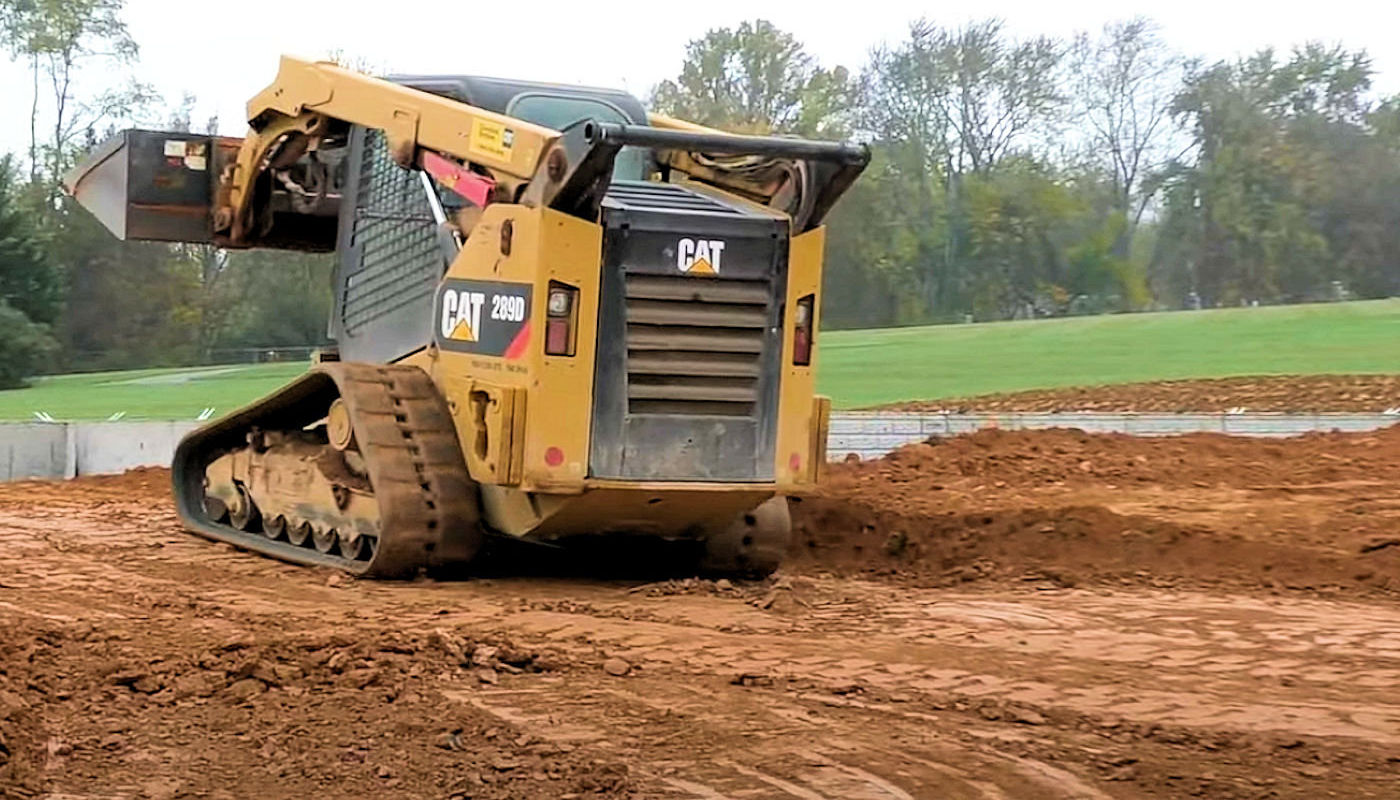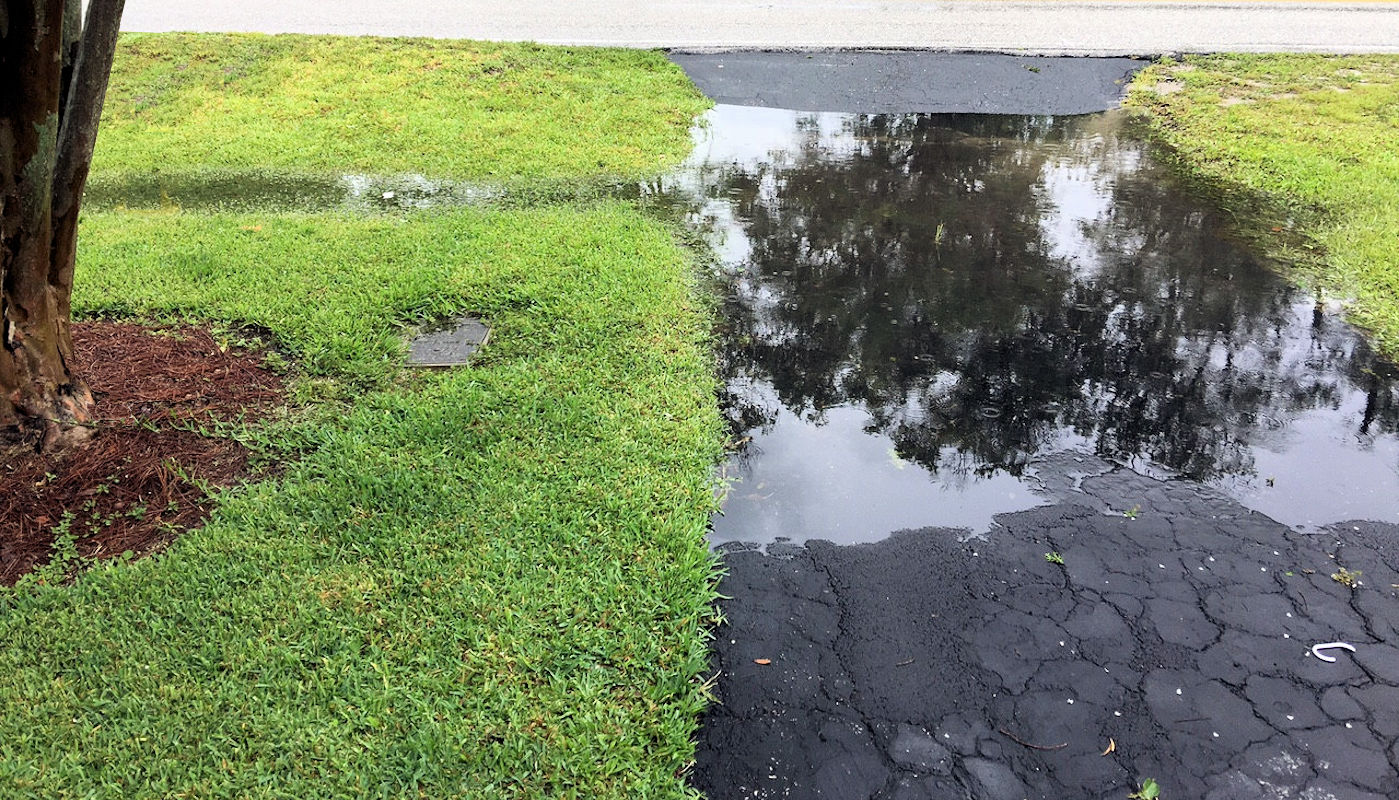
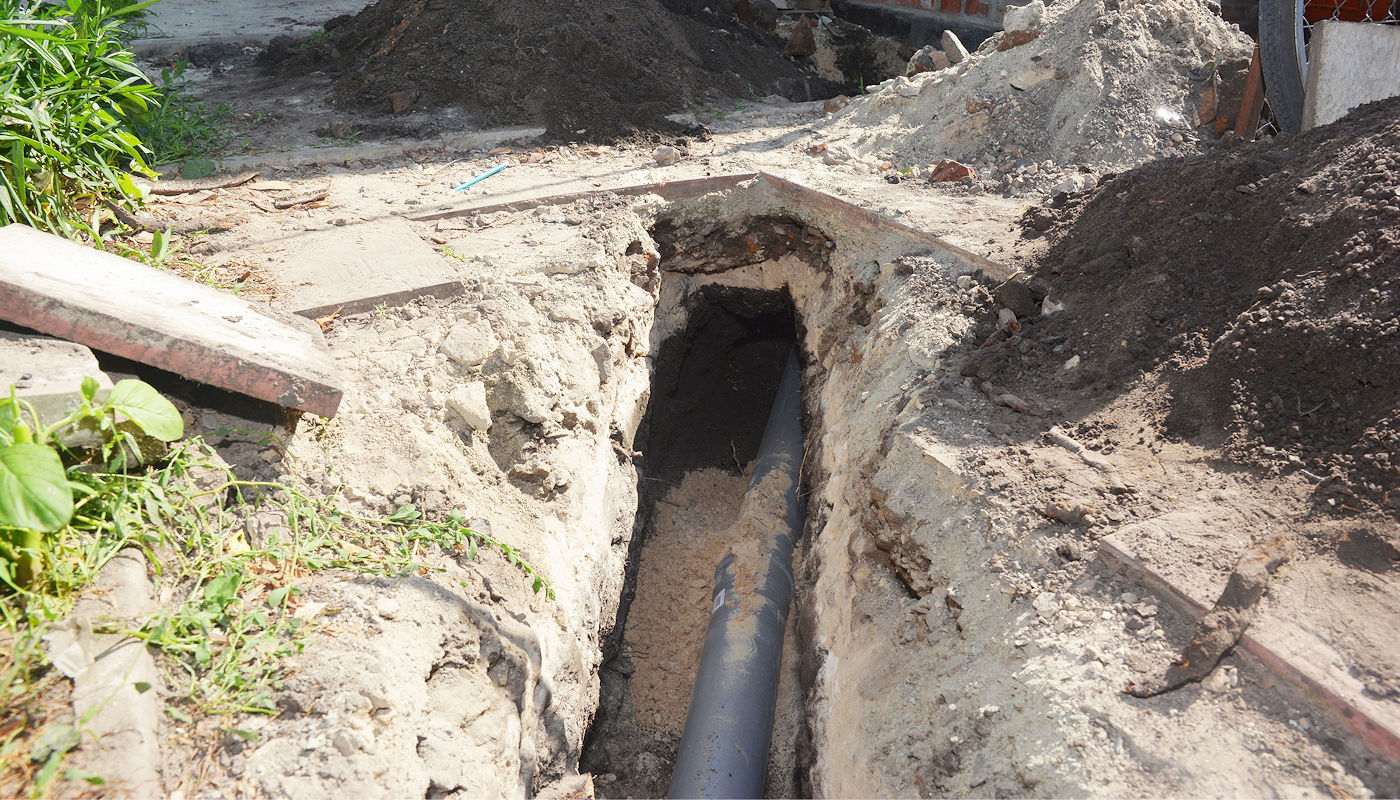
Digging Trench for Water Line Installation,
Repair, or Replacement
Water Line Trenching Solutions from Texoma Excavation & Construction
Digging Trench for Water Line Installation, Repair, or Replacement
Water Line Trenching Solutions from Texoma Excavation & Construction
The purpose of open cut trenching for installing utilities at a home or business is to provide a safe and efficient way to install underground infrastructure or utilities. Trenching allows for the installation of utilities such as gas mains, water mains, communication lines, and pipelines. Trenching is also used to install drainage and sewer lines as well as city-wide electric lines.
Open cut utility trenching is a challenging and dangerous construction job that requires an experienced and qualified contractor like Texoma Excavation & Construction. First the contractor will need to establish the depth and width of the trench to be dug, excavating the hole using heavy equipment such as a backhoe. Once the trench has been excavated, the utilities will be installed and trench cover, completing an early and crucial step in many construction projects.
The depth of a trench for utilities depends on the project and the type of pipe being installed. Here are some general guidelines:
Steps for Open Trench Water Line Repair, Replacement, or Installation
Open Trench Excavation is the most common method for installing, repairing, or replacing a water pipe, especially if the original pipe needs to be upsized. When an open trenching excavation contractor is making water connections from a home or business to the main lines, they should follow these steps:
Water Line Trenching for Spot Repairs
A water line spot repair is the replacement of a short section of pipe, not the full length of pipe from manhole to manhole. A spot repair requires digging a small trench so that crews can replace the short section of broken pipe. Texoma Excavation & Construction will dig a trench, remove the section of broken pipe, install a section of new pipe, backfill the trench, repair and repave any damaged pavement area after the work passes inspections.
Special Trenching Considerations for Deeply Buried Water Pipes
When digging a trench for a water pipe repair, the walls of the trench should be sloped or benched to prevent soil collapse and ensure worker safety.
The slope angle depends on the soil type, trench depth, and other factors, such as:
Resources
- 1How to Repair an Underground Water Supply Pipe, The Spruce. Online resource.
- 2French Drains: How They Work, and How to Install Them, Bob Vila. Online resource.
- 3SLOPING AND BENCHING SYSTEMS, National Institute of Environmental Health Sciences. Online resource.
- 412-5-7: EXCAVATIONS FOR UNDERGROUND PIPING:, American Legal Publishin. Online resource.
Past Excavation Projects
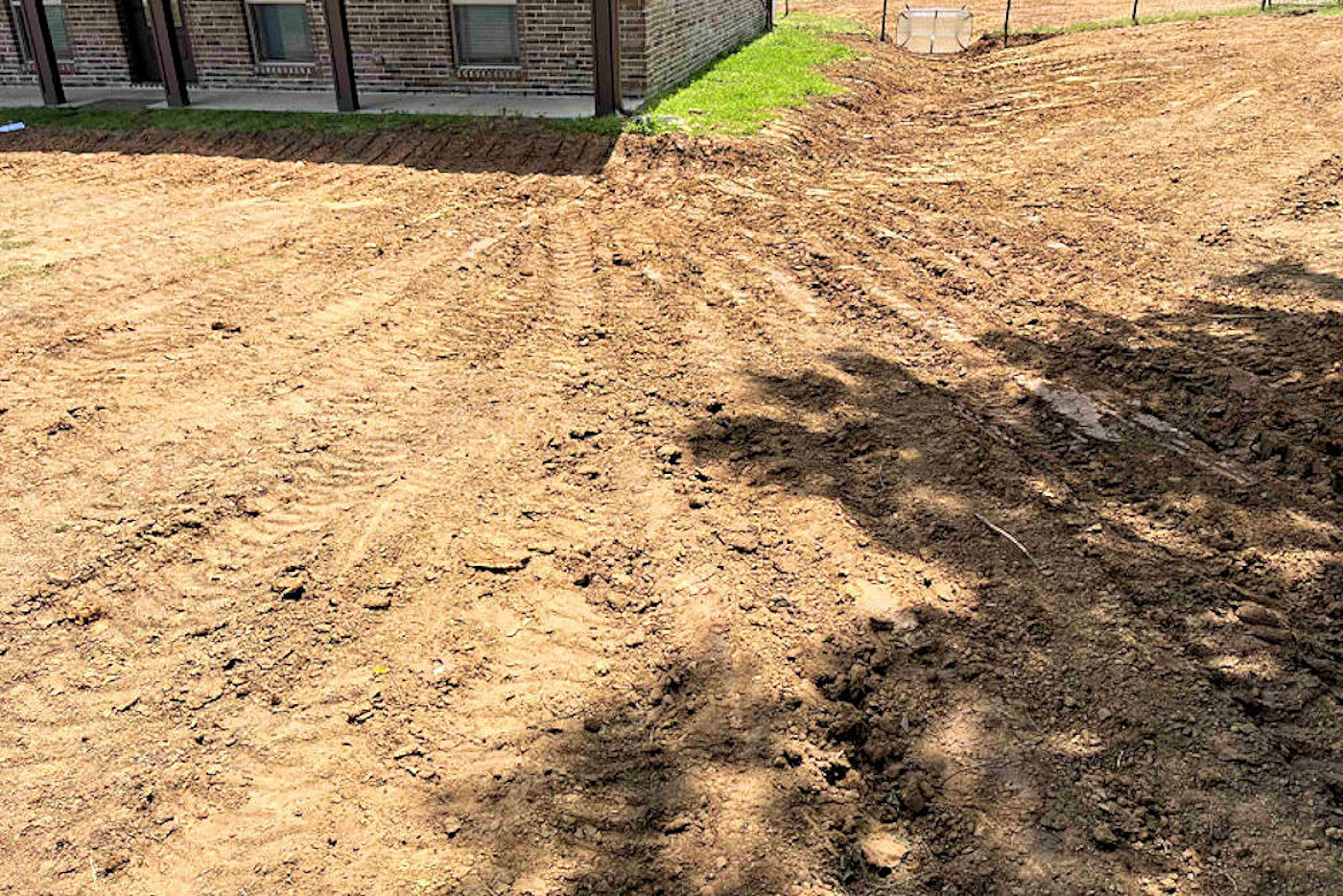
The above image shows Texoma Excavation & Construction digging a new power supply ditch and tying into the existing live power supply near Melissa, Texas. The paver stones were salvaged to be replaced. All the PVC, electrical conduit, phone lines, and small electrical lines that were destroyed were anticipated.

Pond building is a complex process that requires careful planning and execution. After all the planning, the first construction step is excavation of the area where the pond will be located. The pond excavation work shown above was near Montague, Texas. When this pond is full, it will be 7′ 2″ deep at its deepest point.
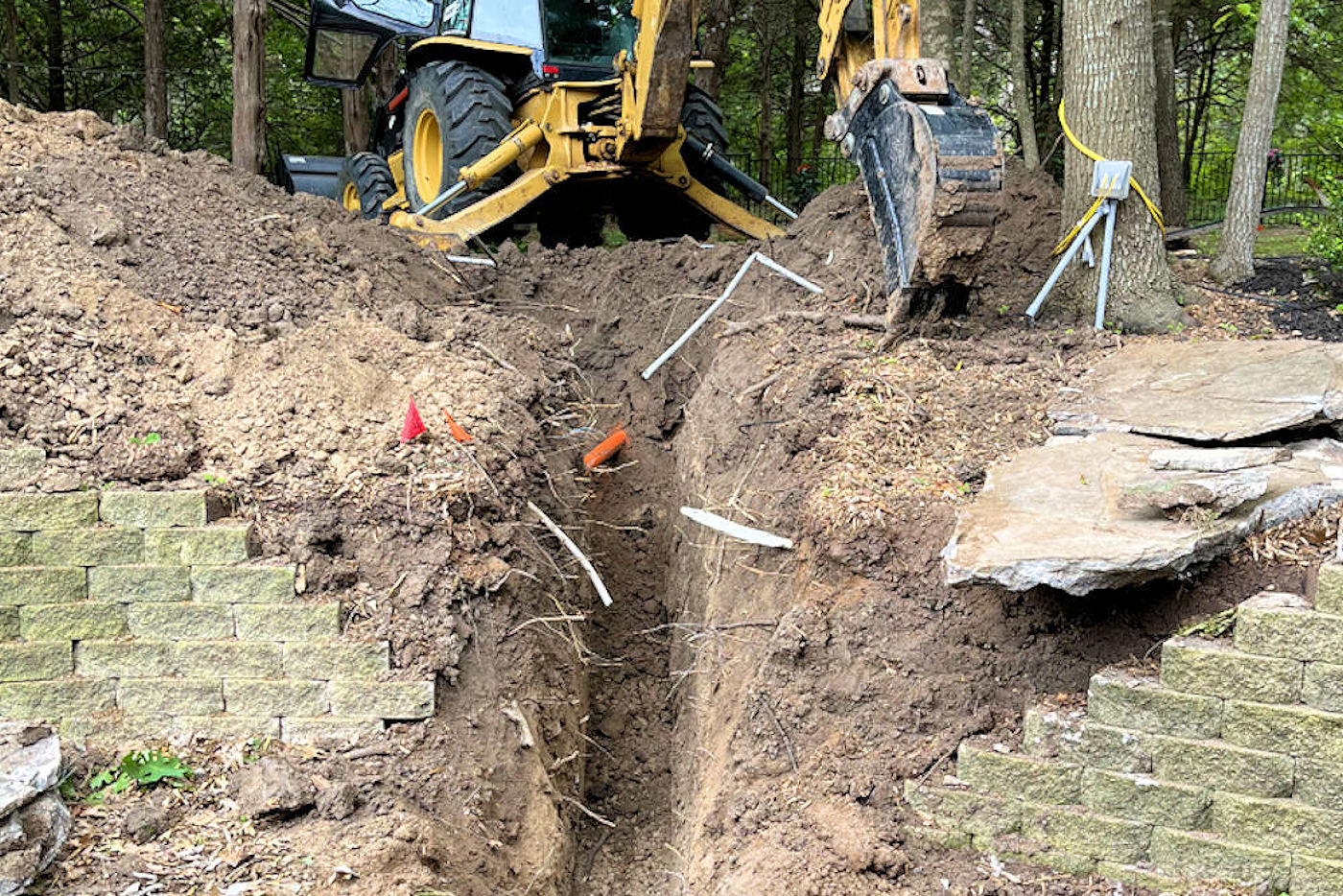
Residential drainage excavation work done near Denison, Texas. This client had some significant drainage problems during periods of high-volume runoff and tried to excavate a ditch to channel water away from his house. We were hired to polish the existing ditch and spread some grass seed.


